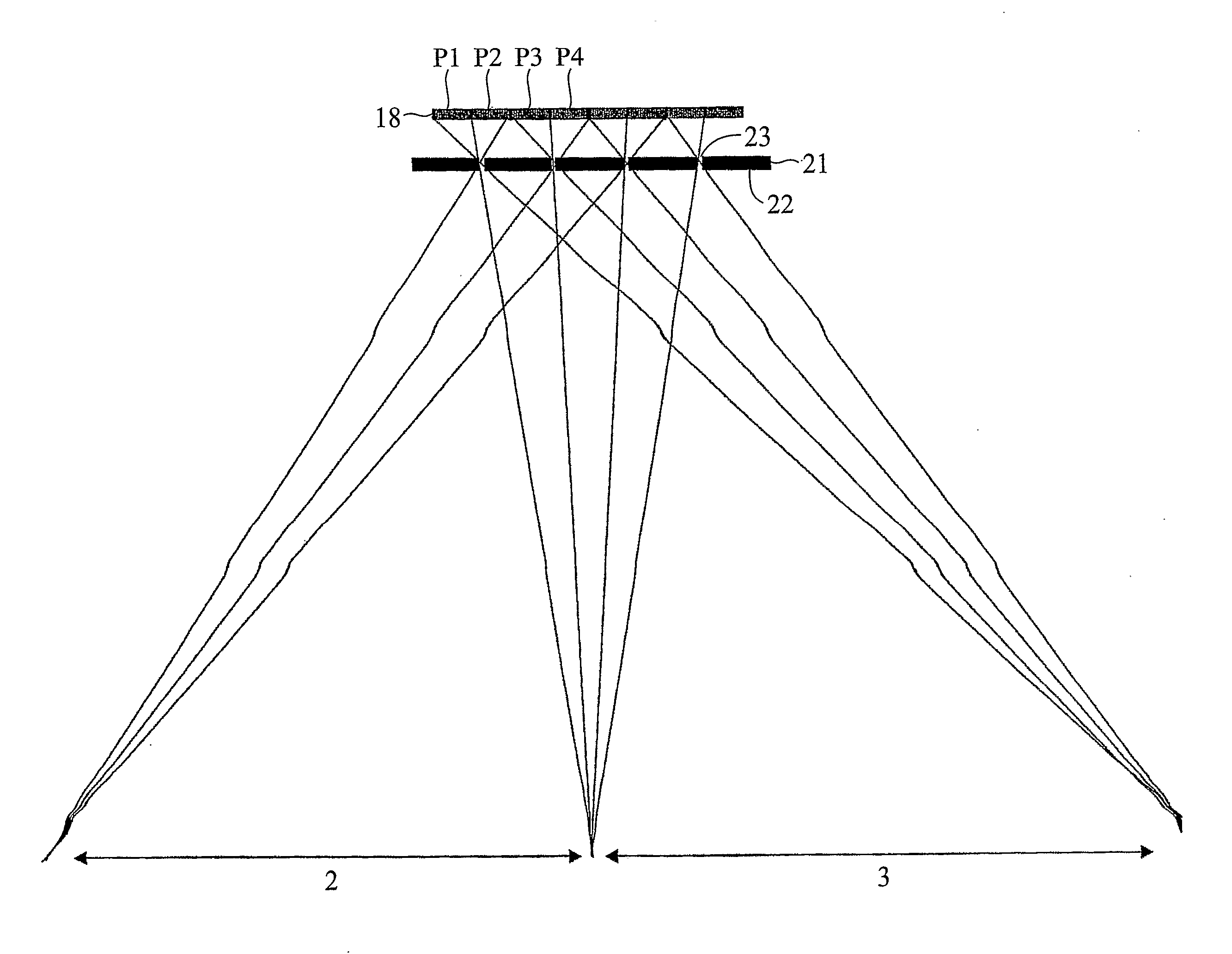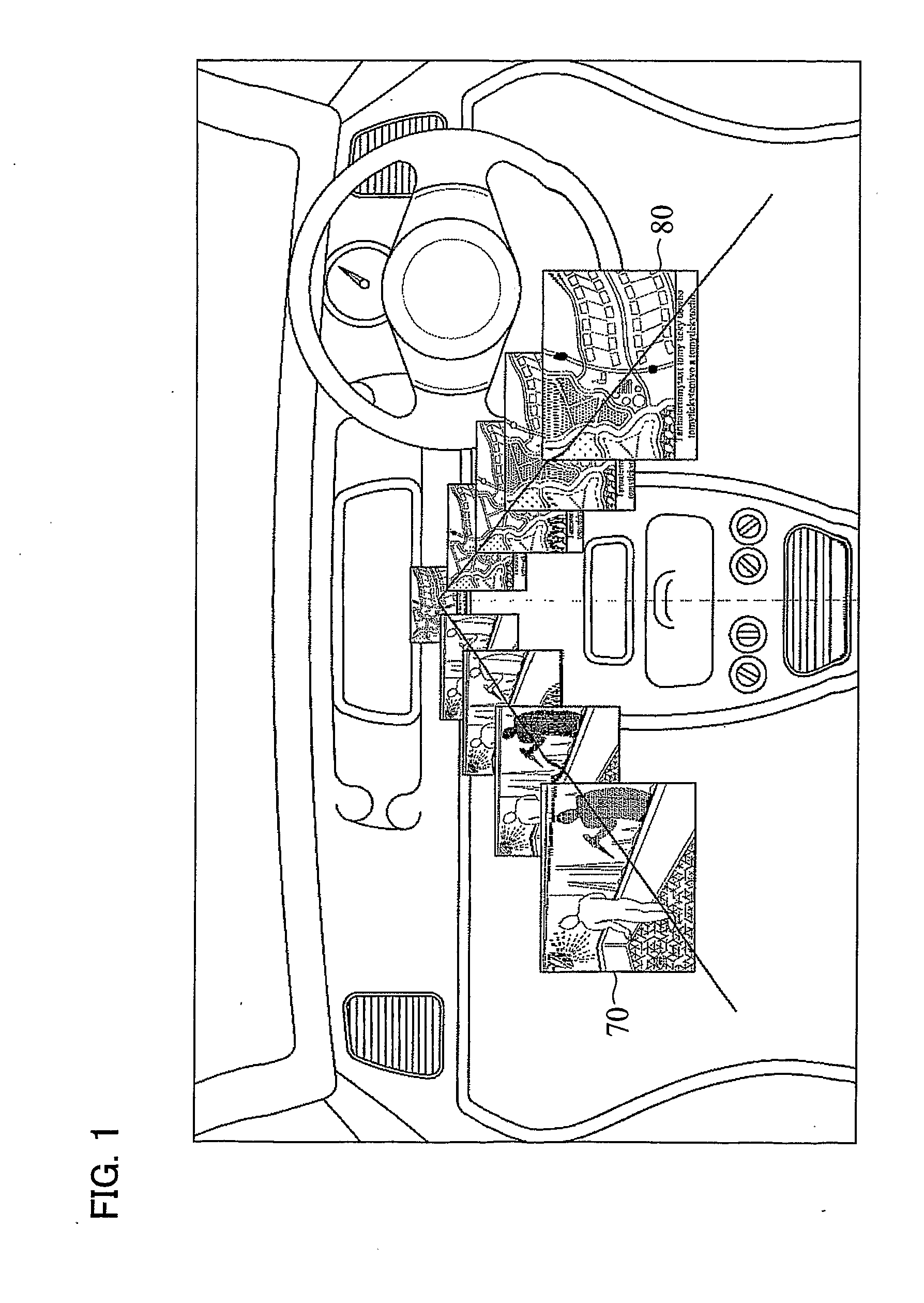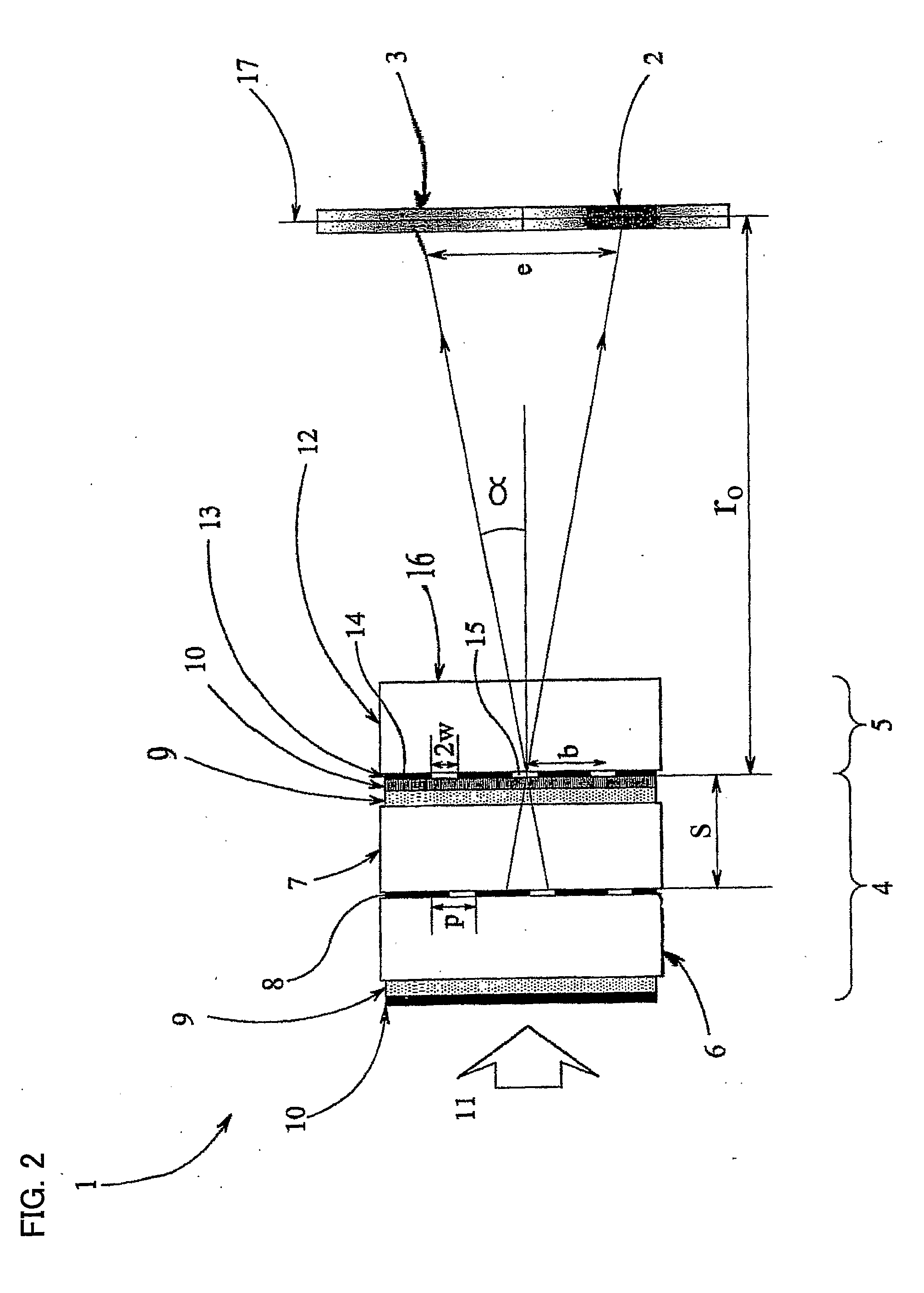Multiple-view directional display
a directional display and multi-view technology, applied in the field of multi-view directional display, can solve the problems of increasing the cost, occupying a lot of space, and requiring a separate display screen for each player, and achieve the effect of improving the quality of the display and reducing the angular exten
- Summary
- Abstract
- Description
- Claims
- Application Information
AI Technical Summary
Benefits of technology
Problems solved by technology
Method used
Image
Examples
Embodiment Construction
[0079]The invention will be described with reference to a dual view display, intended to display a first image to a first observer and a second image to a second observer. However, the invention may also be applied to an autostereoscopic 3-D display.
[0080]FIG. 5 shows a dual view display having a pixellated image display layer 8, for example a liquid crystal layer, and a parallax barrier aperture array 21. The pixels are assigned alternately to a “left image” intended for display into a left viewing window 2 and to a “right image” intended for display into a right viewing window 3. Thus, pixels in odd-numbered pixel columns P1, P3 etc are assigned to the left image and so will be referred to as “left pixels” and pixels in even-numbered pixel columns P2, P4 etc are assigned to the right image and so will be referred to as “right pixels”. The apertures 23 of the parallax barrier aperture array have a finite width w so that, as explained with reference to FIG. 4 above, a central image ...
PUM
 Login to View More
Login to View More Abstract
Description
Claims
Application Information
 Login to View More
Login to View More - R&D
- Intellectual Property
- Life Sciences
- Materials
- Tech Scout
- Unparalleled Data Quality
- Higher Quality Content
- 60% Fewer Hallucinations
Browse by: Latest US Patents, China's latest patents, Technical Efficacy Thesaurus, Application Domain, Technology Topic, Popular Technical Reports.
© 2025 PatSnap. All rights reserved.Legal|Privacy policy|Modern Slavery Act Transparency Statement|Sitemap|About US| Contact US: help@patsnap.com



